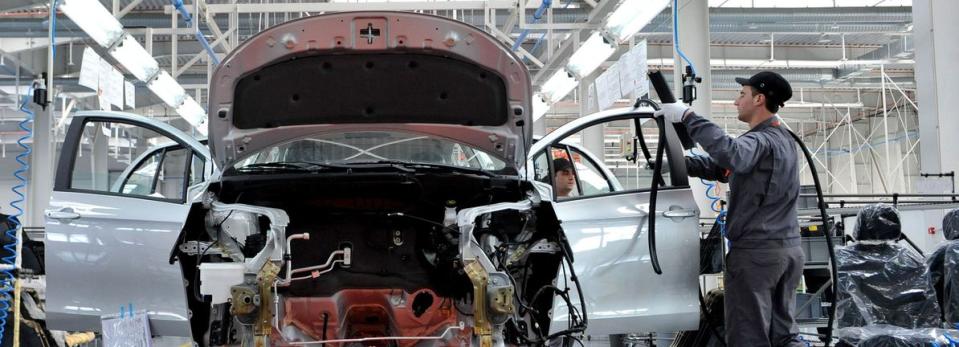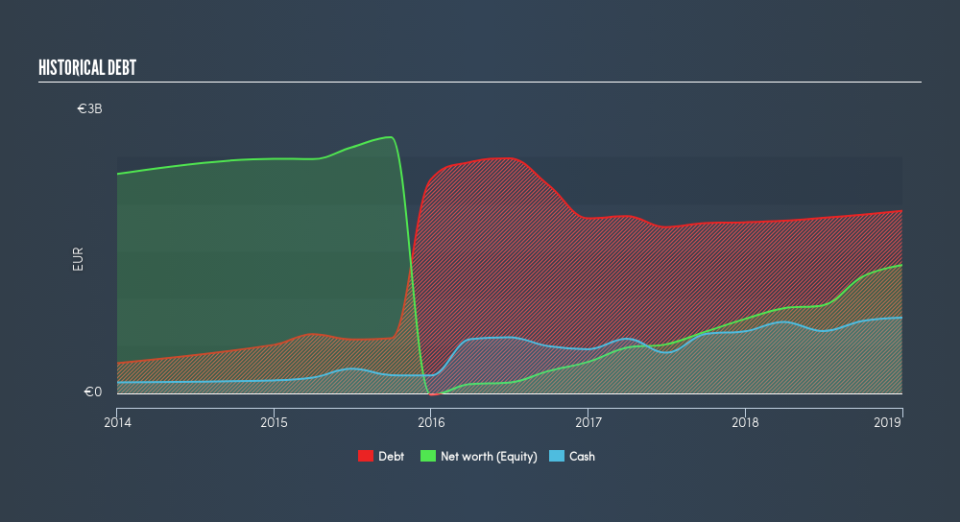Ferrari N.V. (NYSE:RACE): Time For A Financial Health Check

Investors seeking to preserve capital in a volatile environment might consider large-cap stocks such as Ferrari N.V. (NYSE:RACE) a safer option. Market participants who are conscious of risk tend to search for large firms, attracted by the prospect of varied revenue sources and strong returns on capital. However, the key to their continued success lies in its financial health. I will provide an overview of Ferrari’s financial liquidity and leverage to give you an idea of Ferrari’s position to take advantage of potential acquisitions or comfortably endure future downturns. Remember this is a very top-level look that focuses exclusively on financial health, so I recommend a deeper analysis into RACE here.
Check out our latest analysis for Ferrari
RACE’s Debt (And Cash Flows)
RACE's debt levels surged from €1.8b to €1.9b over the last 12 months , which accounts for long term debt. With this growth in debt, the current cash and short-term investment levels stands at €799m to keep the business going. Moreover, RACE has produced €934m in operating cash flow during the same period of time, leading to an operating cash to total debt ratio of 48%, meaning that RACE’s operating cash is sufficient to cover its debt.
Can RACE meet its short-term obligations with the cash in hand?
With current liabilities at €1.3b, the company has been able to meet these obligations given the level of current assets of €2.5b, with a current ratio of 1.93x. The current ratio is the number you get when you divide current assets by current liabilities. For Auto companies, this ratio is within a sensible range since there's a sufficient cash cushion without leaving too much capital idle or in low-earning investments.
Can RACE service its debt comfortably?
With total debt exceeding equities, Ferrari is considered a highly levered company. This is not unusual for large-caps since debt tends to be less expensive than equity because interest payments are tax deductible. Accordingly, large companies often have an advantage over small-caps through lower cost of capital due to cheaper financing. We can check to see whether RACE is able to meet its debt obligations by looking at the net interest coverage ratio. Ideally, earnings before interest and tax (EBIT) should cover net interest by at least three times. In RACE's case, the ratio of 34.45x suggests that interest is comfortably covered. High interest coverage serves as an indication of the safety of a company, which highlights why many large organisations like RACE are considered a risk-averse investment.
Next Steps:
Although RACE’s debt level is towards the higher end of the spectrum, its cash flow coverage seems adequate to meet obligations which means its debt is being efficiently utilised. Since there is also no concerns around RACE's liquidity needs, this may be its optimal capital structure for the time being. This is only a rough assessment of financial health, and I'm sure RACE has company-specific issues impacting its capital structure decisions. I recommend you continue to research Ferrari to get a better picture of the large-cap by looking at:
Future Outlook: What are well-informed industry analysts predicting for RACE’s future growth? Take a look at our free research report of analyst consensus for RACE’s outlook.
Valuation: What is RACE worth today? Is the stock undervalued, even when its growth outlook is factored into its intrinsic value? The intrinsic value infographic in our free research report helps visualize whether RACE is currently mispriced by the market.
Other High-Performing Stocks: Are there other stocks that provide better prospects with proven track records? Explore our free list of these great stocks here.
We aim to bring you long-term focused research analysis driven by fundamental data. Note that our analysis may not factor in the latest price-sensitive company announcements or qualitative material.
If you spot an error that warrants correction, please contact the editor at editorial-team@simplywallst.com. This article by Simply Wall St is general in nature. It does not constitute a recommendation to buy or sell any stock, and does not take account of your objectives, or your financial situation. Simply Wall St has no position in the stocks mentioned. Thank you for reading.

